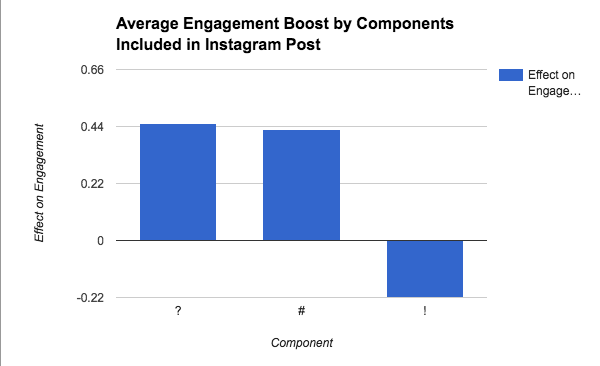
The world’s biggest brands are gung-ho on Instagram. TrackMaven analyzed a year’s worth of Instagram content, amounting to 41,000 posts and found that more than 50 percent of the Fortune 500 now have Instagram presences. In 2013, only 24.6 percent of Fortune 500 brands had Instagram accounts — 123 brands in all. A Dartmouth study found that the biggest brands in the world now use Instagram more than both Google+ or Pinterest.
Instagram remains top of mind, despite changes to the platform including an algorithm that may dampen organic success, as well as the introduction of new formats like longer video. It is also where the people are: A third of the Earth’s internet population is expected to be on it by 2018.
But how do these brands really use Instagram?
Likes still rule: Per TrackMaven, 98.9 percent of interactions come in the form of likes, while comments account for only 1.1 percent. Weekdays also rule: Thursday and Friday account for most of the posting activity on Instagram.

And posting more and more regularly might not be a bad thing. A report from L2 found that frequency of posting is key to higher engagement: Fashion brands, which tend to be the most active brands on Instagram, posted an average of 10 times a week in 2015, up from eight times a week in 2014.
According to TrackMaven, brands that ask questions in their posts see a 0.45 percent boost in engagement compared with those that ask no questions. And those with hashtags see a 0.43 percent boost. But whatever you do, don’t include an exclamation point: It actually lowers engagement by 0.22 percent.

TrackMaven also looked at what types of content Fortune 500 brands tend to upload. The company found that 89 percent of posts from those companies are #nofilter — brands either don’t retouch photos or pre-design them. Here are the filters brands do use, followed by the filters that actually get the most engagement.


More in Marketing

Why angel investor Matthew Ball still believes in the metaverse
Matthew Ball’s 2022 book “The Metaverse: And How It Will Revolutionize Everything” was a national bestseller in the U.S. and U.K. On July 23, he plans to publish the second edition of the book.

Marketing Briefing: Why sustainability is ‘not a priority’ for marketers right now
Anecdotally, there have been noticeably fewer requests from marketers on ways to market sustainability efforts in recent months, according to agency execs, who say that requests had been commonplace in the late 2010s and early 2020s.

‘We’re watching the war’: Tubi hits growth spurt, but isn’t part of the streaming wars, CMO Nicole Parlapiano says
On the latest episode of the Digiday Podcast, Tubi CMO Nicole Parlapiano shares her perspective on the so-called streaming wars, pitching Tubi’s multicultural viewers and the streaming platform’s growth track.





